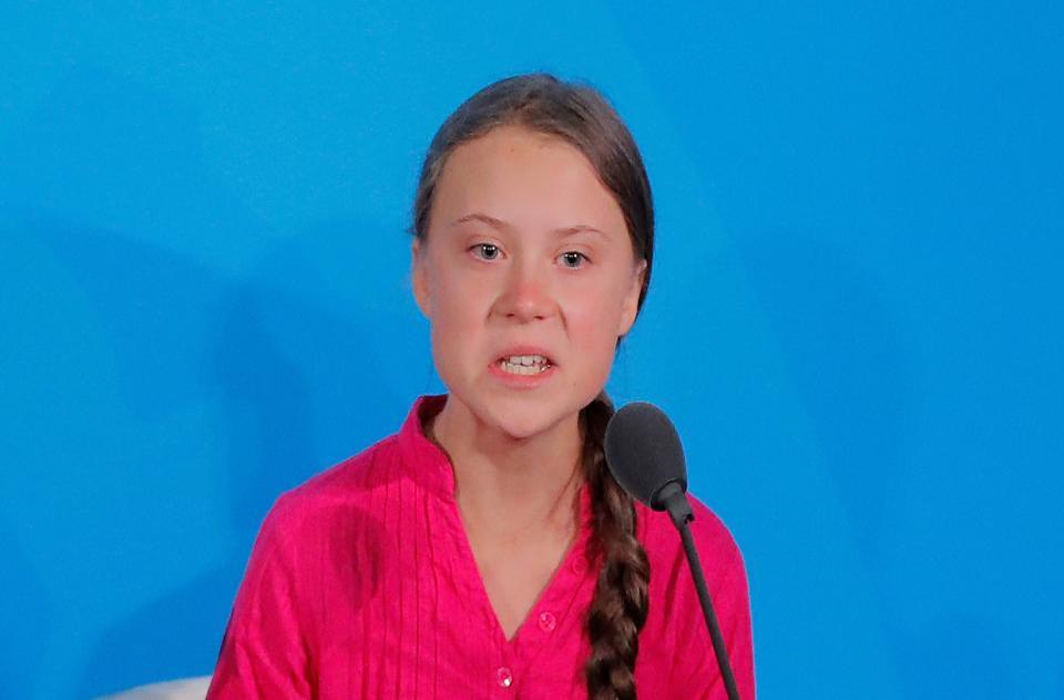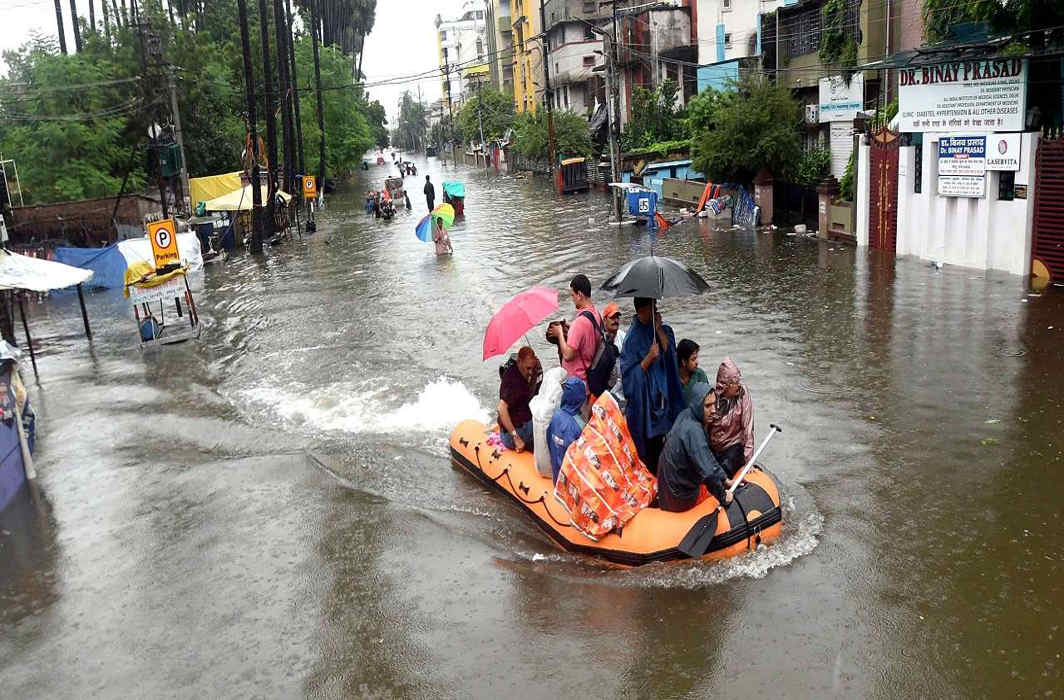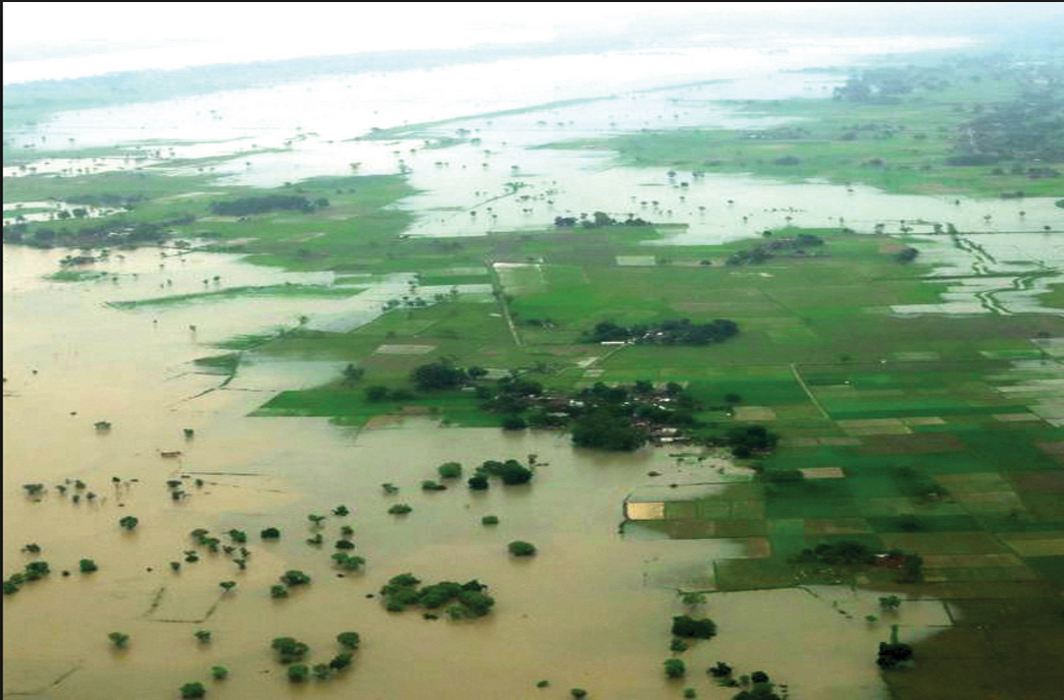Latest Science News
Greenland ice melting four times faster than in 2003; serious implications for sea level rise

[vc_row][vc_column][vc_column_text]Threat of rising seas submerging coastal regions and islands of the world is becoming more real and getting closer: after news of Antarctic ice melting six times faster than 40 years earlier, a new report finds that climate change is causing Greenland’s massive ice sheets to melt four times faster than in 2003 – just 15 years ago.
The study says that it may be “too late” to do anything about it.
The study published on Monday, Jan 21, in the Proceedings of the National Academy of Sciences says this could have dire implications for the planet’s low lying islands and coastal cities, reports CNN.
Eight of the 10 largest cities in the world are near coasts, and 40 per cent to 50 per cent of the planet’s population live in areas vulnerable to rising seas, it said.
Michael Bevis, a professor of geodynamics at The Ohio State University and the lead author of the study, said the research found that humanity may have passed the point of no return when it comes to combating climate change, reported a news agency.
“The only thing we can do is adapt and mitigate further global warming… It’s too late for there to be no effect,” said Bevis.
“This is going to cause additional sea level rise. We are watching the ice sheet hit a tipping point.”
Greenland’s ice has historically melted in cycles due to natural weather phenomena, but rising temperatures have exacerbated the trend, said Bevis.
Greenland, the world’s biggest island, appears to have hit a tipping point around 2002-2003 when the ice loss rapidly accelerated, said lead author Michael Bevis, a geoscientist at Ohio State University.
Bevis and his co-authors found that by 2012, the rate of ice loss had accelerated to nearly four times what it was in 2003. They also found this acceleration largely took place in Greenland’s southwest.
Before this study, scientists understood Greenland to be one of the Earth’s major contributors to sea-level rise — mostly because of its glaciers. Researchers studying sea level rise often focus on Greenland’s southeast and northwest regions, home to large glaciers which see large icebergs break off and flow into the Atlantic Ocean, CNN reported. Those chunks then melt and cause sea levels to rise.
But most of this ice loss is from the land-fast ice sheet itself, not Greenland’s glaciers. The largest sustained ice loss from early 2003 to mid-2013 came from Greenland’s southwest region, which is mostly devoid of large glaciers.
These new findings, Bevis said, show that scientists need to be watching the island’s snowpack and ice fields more closely, especially in and near southwest Greenland, reported Phys.org.
The Greenland ice sheet is 10,000 feet thick in places and contains enough ice to raise sea levels 23 feet (7 meters), said a National Geographic report. These ice sheets have been melting at an “unprecedented” rate, 50 per cent higher than pre-industrial levels and 33 per cent above 20th-century levels.
In the 20th century, Greenland has lost around 9,000 billion tons of ice in total, accounting for 25 millimeters of sea-level rise. (It takes about 360 billion tons of ice to produce one millimeter of global sea-level rise.)
Global warming of just 1 degree C is the main driver behind this massive meltdown of the world’s ice.
All it takes to melt Greenland’s ice sheet is a surface temperature of 1 C and sunlight. “It used to be rare to get temperatures above 0 degrees on the ice sheet, but no longer,” Bevis said. And each degree above 1 C doubles the amount of ice melt.
However, the National Geographic report said, Greenland is dwarfed by the Antarctic ice sheet, which could raise sea level 57 meters if fully melted. Alarmingly, the Antarctic is also undergoing an accelerated melt down, losing six times as much ice as it was four decades ago, a January 14 study reported. Its ice loss averaged 252 billion tons a year over the past decade.
It’s the same story for western North America’s glaciers where ice loss quadrupled since the early 2000s to 12.3 billion tons annually, a recent study revealed. A similar trend is reported elsewhere. In Himalayas, which have the largest number of glaciers after the polar ice caps – more than thirty thousand sq. km of the Himalayan region is covered by the glaciers – the glaciers are disappearing faster every year, said a report, with some smaller glaciers now only half the size they were in the 1960s. Research on the subject, however, pointed out a Down to Earth report, is still disparate and disjointed. Even the number of glaciers, the total area they cover, and the total volume of water stored in them remains clouded in uncertainty.[/vc_column_text][/vc_column][/vc_row]
India News
President Droupadi Murmu launches India’s first homegrown CAR T-cell therapy for cancer treatment
The gene-based therapy, which is developed by the IIT Bombay and Tata Memorial Centre, is being rolled out in India at about one-tenth of its price outside the country.
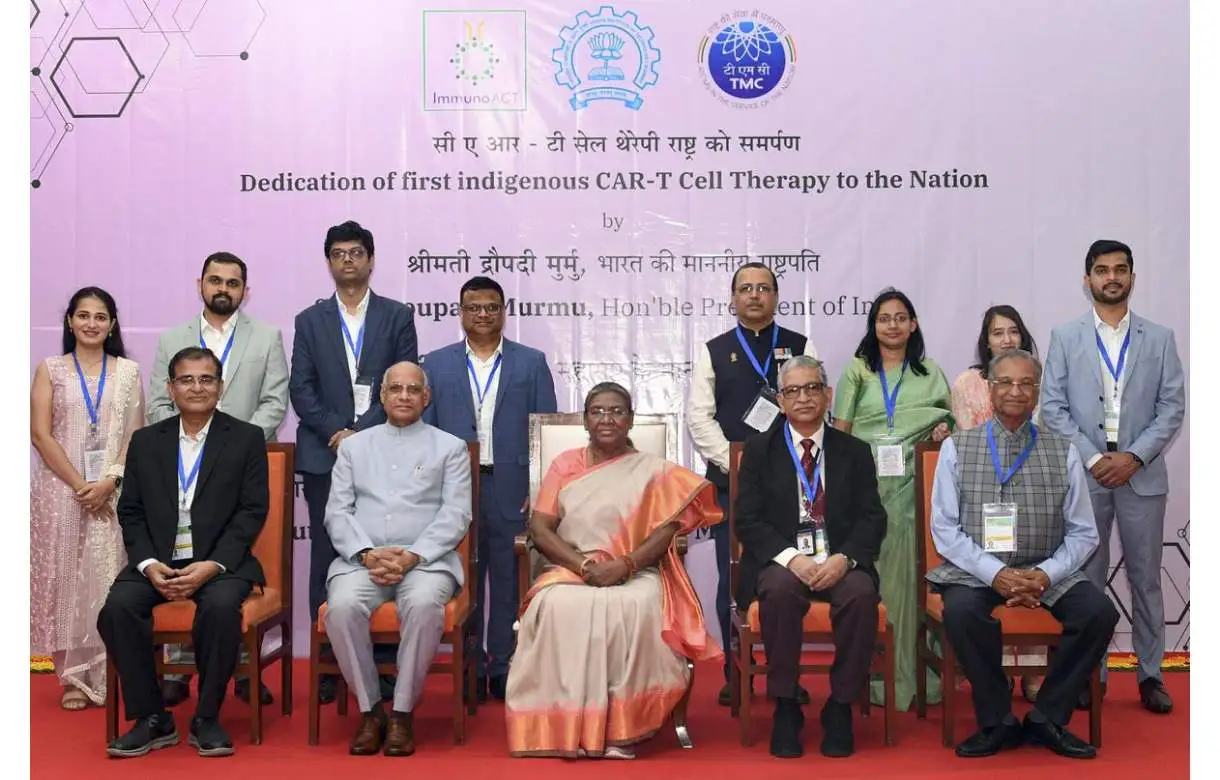
President Droupadi Murmu on Thursday launched India’s first indigenously-developed CAR T-cell therapy, a gene-based therapy, for cancer treatment, hailing it as a breakthrough that provides new hope for humankind in the battle against the diseases.
Speaking at the launch event at the Indian Institute of Technology (IIT) Bombay, Murmu said the indigenous development of the CAR T-cell therapy was an example of the Make in India initiative.
The gene-based therapy, which is developed by the IIT Bombay and Tata Memorial Centre, is being rolled out in India at about one-tenth of its price outside the country, as per the senior official.
In CAR T-cell therapy, a patient’s T-cells, which is a type of immune system cell or stem cell, are modified in the laboratory and inserted back into the patient to attack and destroy cancer cells after editing the stem cell.
The NexCAR19 CAR T-cell therapy, the country’s first Made in India CAR T-cell therapy, is expected to bring down the cost of treatment significantly.
During her speech, Murmu said that this therapy is considered a phenomenal advance in medical sciences. The development of this therapy is also an example of the Make in India initiative and speaks volumes about Indian scientists and physicians, she added.
The launch of India’s first gene therapy is a significant breakthrough in the battle against cancer. As this line of treatment, named CAR T-cell therapy, is accessible and affordable, it provides a new hope for the whole of humankind, President Murmu further added.
The Tata Memorial Centre director Sudeep Gupta said the CAR T-cell therapy was enormously expensive and out of the reach of an overwhelming majority of people.
Asserting that, he said NexCar19 needs to be custom manufactured for every patient under the most stringent conditions, but it has been rolled out at approximately one-tenth of the price at which it is available outside India.
The treatment costs approximately Rs 4 crore abroad against Rs 30 lakh in India, said IIT Bombay director Prof Subhasis Chaudhuri.
He further said that the low-cost CAR T-cell therapy was a huge achievement for the country and cancer patients, and places India firmly on the global map of cell and gene therapy.
Comparing the achievement of Chandrayaan-3 with CAR T-cell therapy, Chaudhuri asserted that CAR-T cell therapy heralds India’s entry into the cell and genetic engineering group.
The Tata Memorial Centre director Gupta said the treatment will help some 20,000 Indians every year, and its rollout is a milestone in the field of cancer care and genetic engineering.
He added the CAR T-cell was not only a scientific achievement of the highest order but also had immense practical application. NexCAR19 will save many, many lives and wipe many, many tears, he emphasised.
India News
ISRO launches weather satellite INSAT-3DS to monitor Earth’s surface, oceans
The Naughty Boy has now become a mature, obedient and disciplined boy like PSLV, and GSLV as they have become a very robust vehicle for ISRO, said Tomy Joseph.
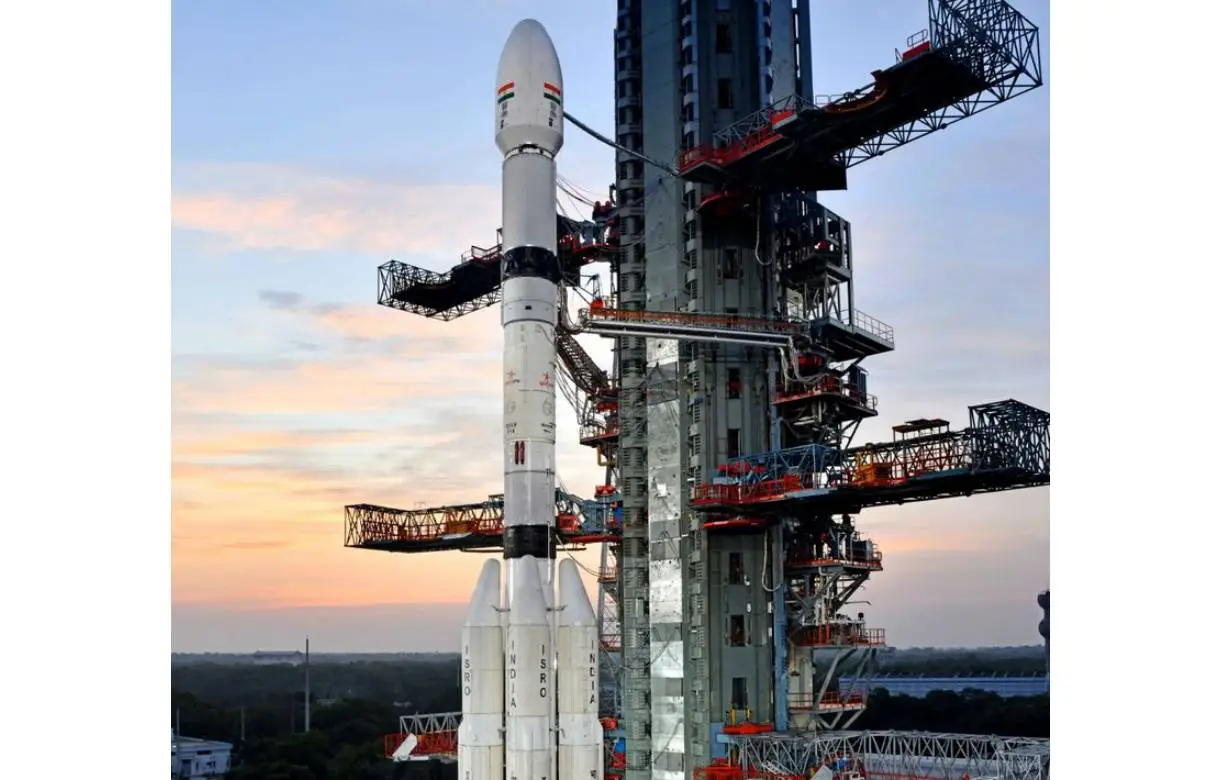
The Indian Space Research Organisation (ISRO) on Saturday launched the INSAT-3DS mission from Satish Dhawan Space Centre in Sriharikota at 5:35 pm to monitor the Earth’s surface, observe the ocean and analyse the environment through various essential meteorological perspectives.
In its mission, the Geosynchronous Satellite Launch Vehicle (GSLV) aimed to deploy the INSAT-3DS meteorological satellite into the Geosynchronous Transfer Orbit (GTO). Subsequent orbit-raising maneuvers will ensure that the satellite is positioned in a Geo-stationary Orbit.
After being positioned in GSO, it will provide information on diverse atmospheric conditions via vertical profiles. INSAT-3DS will manage data collection and dissemination from Data Collection Platforms (DCPs). The satellite will help in search and rescue services.
Congratulating the team, ISRO Chairman S Somanath expressed his happiness over the successful accomplishment of the mission GSLV-F14 INSAT-3DS. He further said that the spacecraft has been injected into a very good orbit. The space agency has also noted that the vehicle has performed very well.
The INSAT-3DS Mission Director, Tomy Joseph sarcastically remarked, saying the Naughty Boy has now become a mature, obedient and disciplined boy like PSLV, and GSLV as they have become a very robust vehicle for ISRO.
The Geosynchronous Satellite Launch Vehicle (GSLV) is a launch vehicle with a length of 51.7 meters and a liftoff mass of 420 tonnes. It consists of three stages, the first stage (GS1) is made up of a solid propellant motor with 139-ton propellant and four earth-storable propellant stages (L40) strapons. Each strapon carries 40 tons of liquid propellant.
The second stage (GS2) is also an earth-storable propellant stage that carries 40-ton propellant, and the third stage (GS3) is a cryogenic stage with a 15-ton propellant loading of liquid oxygen (LOX) and liquid hydrogen (LH2).
To protect the satellite during the atmospheric regime, it is covered by an Ogive payload fairing. The GSLV is versatile and can be used to launch various spacecraft capable of performing communications, navigation, earth resource surveys, and other proprietary missions.
The launch of INSAT-3DS was a follow-on mission of Third Generation Meteorological Satellite from Geostationary Orbit. According to ISRO, the GSLV-F14/INSAT-3DS mission has been fully funded by the Ministry of Earth Sciences (MoES) and designed for enhanced meteorological observations and monitoring of land and ocean surfaces for weather forecasting and disaster warning.
The satellite will augment the Meteorological services along with the presently operational INSAT-3D and INSAT-3DR satellites.
Notably, the services will be used by various departments of the MoES such as the India Meteorology Department (IMD), National Centre for Medium-Range Weather Forecasting (NCMRWF), Indian Institute of Tropical Meteorology (IITM), National Institute of Ocean Technology (NIOT), Indian National Center for Ocean Information Services (INCOIS) and various other agencies.
India News
PM Modi says day not far when an Indian will land on moon in indigenously built spacecraft
PM Modi said a strong roadmap has been drawn till 2040 for the space sector. He made the announcement after flagging off the first Namo Bharat train on the 17 km stretch of the Delhi-Meerut Regional Rapid Transit system.

Prime minister Narendra Modi on Friday said the government has drawn up a roadmap for the development of space sector and the day is not far when an Indian will travel to the moon in an indigenously built spacecraft. PM Modi said India’s Gaganyaan will soon take Indian astronauts to space and the India wants to establish its own space station.
PM Modi said a strong roadmap has been drawn till 2040 for the space sector. He made the announcement after flagging off the first Namo Bharat train on the 17 km stretch of the Delhi-Meerut Regional Rapid Transit system.
PM Modi recalled the success of India’s moon mission Chandrayaan3 which had recently placed the country’s tricolour on the lunar surface. He said India of the 21st century is writing new chapters of progress and development for the landing on the moon has left the world awestruck.
PM Modi added with impeccable hosting of the G20 summit, today’s India has become the centre of attraction and curiosity for the world. He said today’s India wins more than 100 medals in the Asian Games.
PM Modi added today’s India launches 5G on its own strength and takes it to all corners of India. He further added todays India does the highest number of digital transactions. He said the Namo trains that were flagged off today were all made in India.
PM Modi set goals for the Indian Space Research Organisation (ISRO) by asking engineers and scientists to work towards setting up an Indian space staion by 2035 and sending an Indian astronaut to the lunar surface by 2040. PM Modi also asked the scientists to undertake interplanetary missions like the Venus orbiter and also attempt a landing on Mars. PM Modi further added the government has handed over festival gifts by reducing the gas cylinder price by Rs 500 for Ujjwala Yojana beneficiaries.
-

 India News4 hours ago
India News4 hours agoLandslide hits Arunachal Pradesh, highway linking Indo-China border affected
-

 2024 Lok Sabha Elections20 hours ago
2024 Lok Sabha Elections20 hours agoMallikarjun Kharge vows to continue politics till his last breath to defeat BJP
-
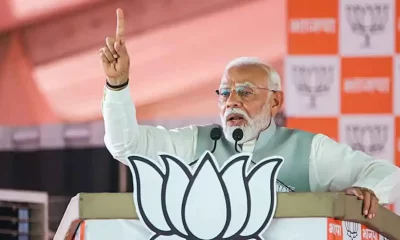
 2024 Lok Sabha Elections24 hours ago
2024 Lok Sabha Elections24 hours agoPM Narendra Modi slams Congress over Sam Pitroda’s inheritance tax remarks, accuses Congress of intending to impose higher taxes
-

 Entertainment22 hours ago
Entertainment22 hours agoMadhuri Dixit, Karisma Kapoor recreate Dil To Pagal Hai dance battle on Dance Deewane
-

 2024 Lok Sabha Elections21 hours ago
2024 Lok Sabha Elections21 hours agoNitin Gadkari says he’s better now after collapsing at election rally in Maharashtra’s Yavatmal
-

 Education2 hours ago
Education2 hours agoFarmer’s son Nilkrishna Gajare Nirmalkumar from Maharashtra scores 100 NTA score in IIT-JEE Mains 2024
-

 Entertainment3 hours ago
Entertainment3 hours agoBollywood stars Salman Khan, Alia Bhatt, Rekha, Sonakshi Sinha, Aditi Rao Hydari attend Sanjay Leela Bhansali’s Heeramandi premiere
-

 India News5 hours ago
India News5 hours agoTamannaah Bhatia summoned in illegal IPL streaming app case, to appear before cyber cell on April 29


